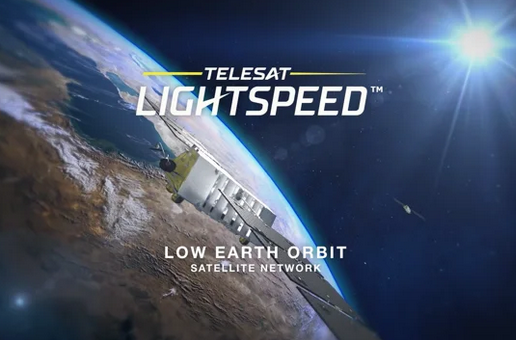Telesat explains Lightspeed benefits
October 18, 2023

Lightspeed is the 198 craft broadband-by-satellite scheme from Telesat of Canada. The company has outlined what it sees as the system’s key advantages, not least flying higher than the “congested” lower Earth orbits of rivals.
Lightspeed has been in the planning and quotation stage for a couple of years but back in August Telesat confirmed that the satellite fleet would be built by space technology business MDA and with financing helped by its own equity partners plus guaranteed contracts from Canadian federal and provincial governments.
Telesat says that Lightspeed has 4 distinct advantages over rival systems:
1: Higher and Less Congested Orbit. LEO orbits are getting increasingly crowded. Companies that have launched (and plan to launch) thousands of LEO satellites position their orbits between 400 – 600 km. above the earth. Telesat Lightspeed satellites will orbit the earth at 1,300 km, literally flying over the traffic jams. Flying high also means far fewer ground-based terminals.
2: Telesat Lightspeed satellites also feature 4 optical inter-satellite links (OISLs) per satellite, creating a mesh network in space. The design includes MDA’s industry-leading digital beamforming array antennas (DRAs) and integrated regenerative processor which provides nearly 300,000 beams across the network. The innovative DRAs provide better link performance, increased network efficiency, and an enhanced flexibility to focus and dynamically deliver capacity to users. This means the network can support multi-Gbps links to user terminals, as well as aggregating up to 15 Gbps of capacity within a demand hot spot like an airport hub of remote community.
3: Other LEO constellations have taken a business-to-consumer approach to the market. But the demands of the Enterprise, Mobility, and Government markets extend beyond best-effort services – they require service levels that are guaranteed by Committed Information Rates (CIRs) and Service Level Agreements (SLAs). Telesat’s approach is to construct an enterprise-class network, surpassing the resiliency and security of consumer-grade LEO networks. has been meticulously designed to function as a flexible and scalable LEO backhaul network, effectively bridging connectivity gaps in areas where terrestrial fibre is either economically unfeasible or physically impractical. This “carrier of carriers” approach links remote communities, aircraft, and maritime vessels to the core telecom infrastructure, giving service providers precise control over how, when, and where they deliver services.
4: Some new entrants into the LEO market are attempting to disrupt the existing service ecosystem in space. These companies also vertically integrate their LEO offering – satellite service, antenna, and modem. This creates vendor lock, reduces customer options, and prevents end users from accessing new innovations. Telesat’s approach is to work through existing service providers and equipment manufacturers. We’ve been providing space services for over 50 years. Our customers know what their customers want, and one of those things is choice. Telesat will also work with regional Satellite Operators, enabling them with next-generation satellite capacity for their local markets.
For these reasons, Telesat Lightspeed can’t really be compared to existing LEO constellations. Our approach is fundamentally different, and our technology is more advanced. LEO has changed the game in space – a very large and fast-growing market. Telesat Lightspeed is a cutting-edge design we’re confident will be extraordinarily well-received in the enterprise, telecom, mobility and government markets.
Other posts by Chris Forrester:
- Virgin Galactic in stock split
- Thuraya-3 suffers major problem
- AST SpaceMobile hit by Class Action
- Optimism under threat at SES
- Rivada visits Terran Orbital’s manufacturing HQ
- Avanti wins spectrum debt obligation case
- SpaceX breaks records for re-use launchers
- IRIS2 already in trouble?
- Intelsat contemplates next steps
